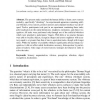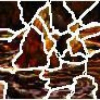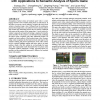25 search results - page 5 / 5 » Learning to Recognize Objects with Little Supervision |
HAPTICS
2010
IEEE
13 years 1 months ago
2010
IEEE
The present study examined the human ability to learn a new sensory modality, specifically "whisking". An experimental apparatus containing artificial whiskers, force sen...
BMCBI
2007
13 years 4 months ago
2007
Background: Structural genomics initiatives are producing increasing numbers of threedimensional (3D) structures for which there is little functional information. Structure-based ...
CVPR
2001
IEEE
14 years 6 months ago
2001
IEEE
We extend a recently developed method [1] for learning the semantics of image databases using text and pictures. We incorporate statistical natural language processing in order to...
MM
2006
ACM
13 years 10 months ago
2006
ACM
Recognition of player actions in broadcast sports video is a challenging task due to low resolution of the players in video frames. In this paper, we present a novel method to rec...
UIC
2009
Springer
13 years 11 months ago
2009
Springer
Abstract. In the last years, techniques for activity recognition have attracted increasing attention. Among many applications, a special interest is in the pervasive e-Health domai...



